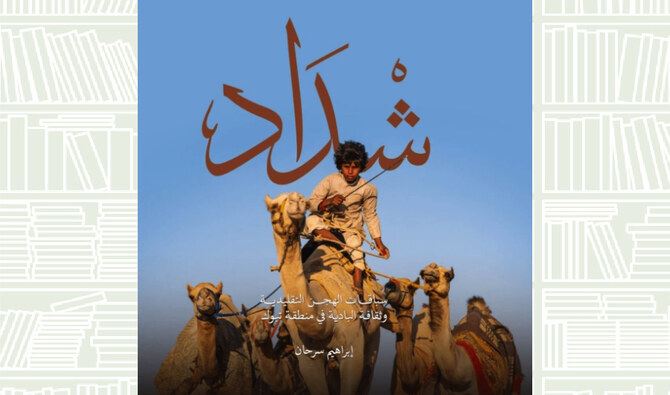“Shdad” by Ibrahim Sarhan is a compelling visual exploration of Tabuk, blending history, culture, and photography into an immersive experience.
Released this year, designated the Year of the Camel in Saudi Arabia, the book’s timing amplifies its impact, showcasing the enduring connection between camels and the people of Tabuk — a connection that has shaped their identity for centuries.
Over three years, Sarhan meticulously documented every corner of Tabuk, capturing the essence of the region through his lens.
The book features a stunning collection of visuals, selected from tens of thousands of photographs, each image illustrating the grandeur of Tabuk’s deserts, mountains, and valleys.
Sarhan’s eye for detail transports readers into the heart of the landscape, revealing not just the physical beauty but the deep cultural stories embedded within it.
At the heart of “Shdad” is the Midian people’s pivotal role in the first historical conflict over camels, a fascinating discovery that bridges the gap between past and present.
Sarhan’s commentary offers context, guiding readers through this ancient narrative and its relevance to the people of Tabuk today.
The book highlights how camel racing and other traditions remain vital to the community, preserving a heritage that continues to thrive in a modernizing world.
What sets “Shdad” apart is its ability to connect readers with the spirit of society in Tabuk. Sarhan captures moments of community and celebration, illustrating how camels remain central to the identity and pride of the region.
His photographs are more than aesthetic captures; they serve as a tribute to the resilience and unity of the people who honor these traditions.
For those in Riyadh, the book can be explored at Alwaal Albari while enjoying a coffee, offering an opportunity to delve into the cultural richness of Tabuk in a relaxed and inviting atmosphere.
Overall, “Shdad” is an essential read for anyone interested in Saudi Arabia’s heritage.
Sarhan’s work not only showcases the stunning landscapes of Tabuk but also highlights the profound cultural significance of camels in the region, making it a visually and culturally enriching experience.


























